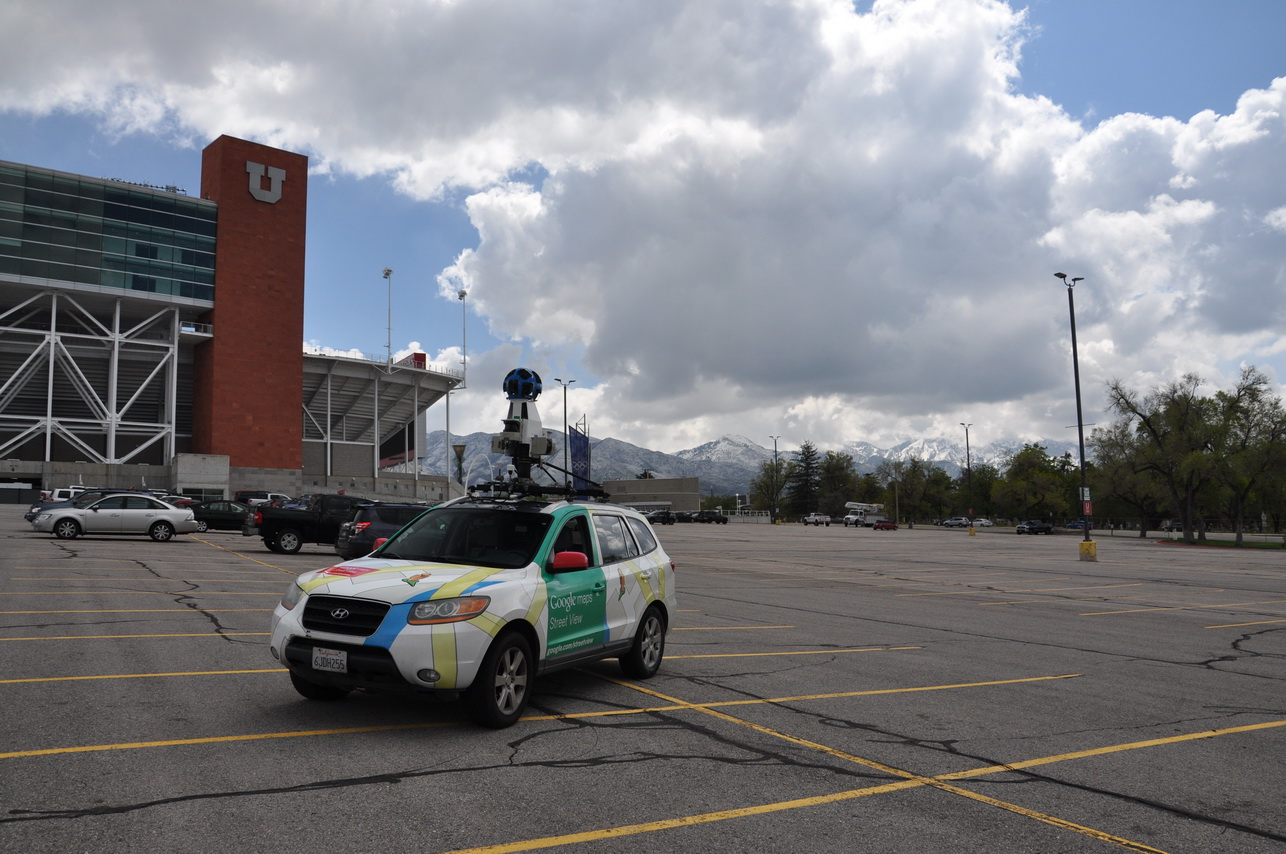Google Street View cars join the U’s air quality team

Cars will sniff out air pollution sources while driving Salt Lake’s neighborhoods
The first step toward fixing air quality challenges in the Salt Lake Valley is understanding how air pollution levels vary across the city. To that end, U researchers have previously placed air sensors in a van, on light rail trains and on a news helicopter. But to get an even finer view of Salt Lake’s air quality, they’re getting help from the people who turned block-by-block driving into an art—Google’s Street View cars.
Since April, the Street View cars, brought to Salt Lake City through the efforts of research assistant professor Logan Mitchell, professor John Lin, Google Earth Outreach and Environmental Defense Fund (EDF), will weave through Salt Lake’s streets, collecting real-time air quality data. Mitchell, Lin and their colleagues will then use the data to identify pollution sources and how they affect different kinds of neighborhoods.
“In the end it’s going to enable better utilization of mobile data,” Mitchell said. “That’s going to give more accurate science-based information to policymakers and stakeholders so we can make better informed decisions about how to clean up the air.”
Bringing the cars to Salt Lake
EDF funds basic research, and for several years, Mitchell and Lin have been applying for funding for studies in Utah. In the meantime, EDF and Google Earth Outreach partnered to launch in 2015 the first Street View air pollution monitoring project in Oakland, California. Since then, sensor-equipped Street View cars have crisscrossed Houston and London. In December 2018, the U researchers got the word from EDF that Salt Lake City would be next on that list.
“Identifying the sources causing elevated pollution, or source apportionment, is a critical next step in EDF’s ongoing air quality research,” said Ramon Alvarez, the organization’s associate chief scientist. “We’re looking forward to collaborating with experts at the U on this important project, which should inform future monitoring efforts.”
Street-level air pollution data is hugely useful as researchers try to learn what areas are most affected by pollution. In Utah, the Salt Lake Valley’s bowl-like geography adds particular urgency to understanding where the worst pollution sources are and which areas they affect most severely. “How do those emissions percolate across the city in a neighborhood that might not have any direct emissions of its own?” Mitchell said.
“Google is excited to support this scientific project. Our projects with EDF have shown just how much air pollution can vary from block to block,” said Karin Tuxen-Bettman, Google Earth outreach program manager, and lead for Google’s Project Air View. “We’re hopeful this project in Salt Lake, where geography plays a unique role in air quality, will take us to the next level and help us understand where neighborhood-level air pollution is coming from.”
The U team brings additional skills to the table. Using data from previously mapped cities, researchers performed statistical analyses to try and trace pollution back to its source. To get the best results from those analyses, however, the pollution data needs to be coupled to a model of how air moves through the region.
“By combining the detailed pollution data from the Google Street View cars with a computer model of wind patterns, we can map out the pollution sources with unprecedented granularity,” Lin said.
Driving Salt Lake’s neighborhoods
Through the end of 2019, Mitchell, Lin and their colleagues will be directing the routes of the two Street View cars, driven by Google drivers, with installed air sensors. The research team has identified 26 neighborhoods for the cars to repeatedly drive, from the industrial areas north of Salt Lake City to residential areas as far south as Cottonwood Heights and West Jordan. “It’s a mix because we are interested in looking at pollution sources,” Mitchell said. “We included some of the more industrial parts of town where we would expect to see some emissions, but we’re also driving in areas with a wide range of income and minority composition.”
Over the course of the eight-month study, the cars may drive the same streets around 40 times. That kind of repetition is important, Mitchell said, to capture pollution conditions during different wind directions and seasons.
This won’t be the first time U researchers have hopped in a car to conduct street-level research. They have run a mobile air quality research station out of a van that they’ve driven around the valley to collect swaths of data. But hiring a driver and maintaining a van are costly, so partnering with Google Street View makes this expanded in-depth study possible.
The end goal is to provide information that will help residents and leaders of the Salt Lake Valley make science-based decisions to improve Utah’s air quality.
“This project,” Mitchell said, “is going to help us.”


